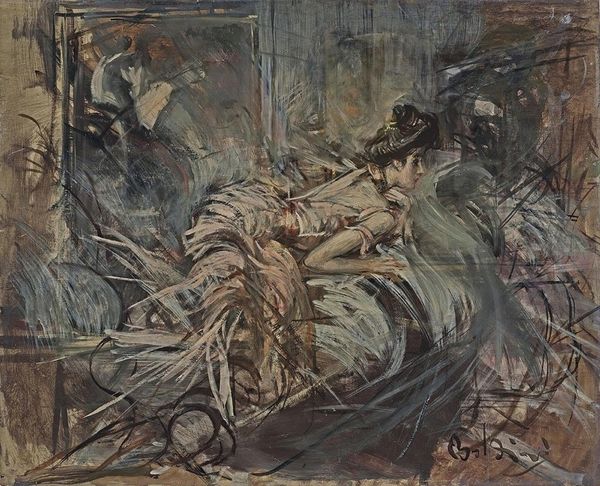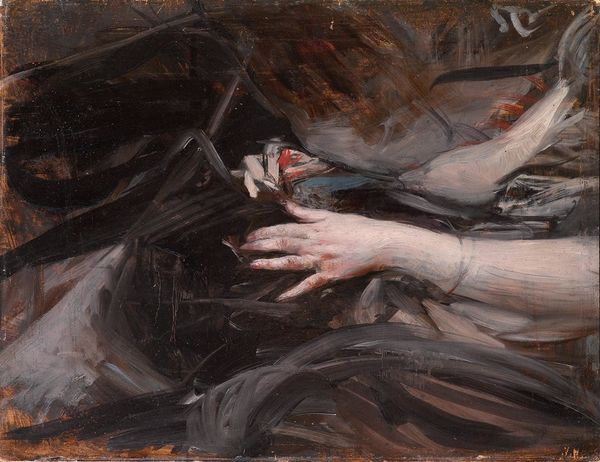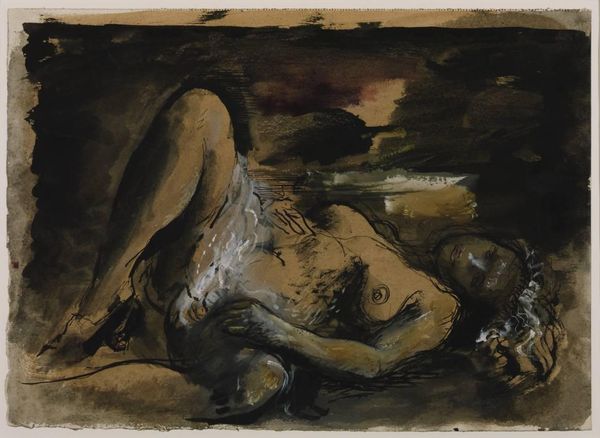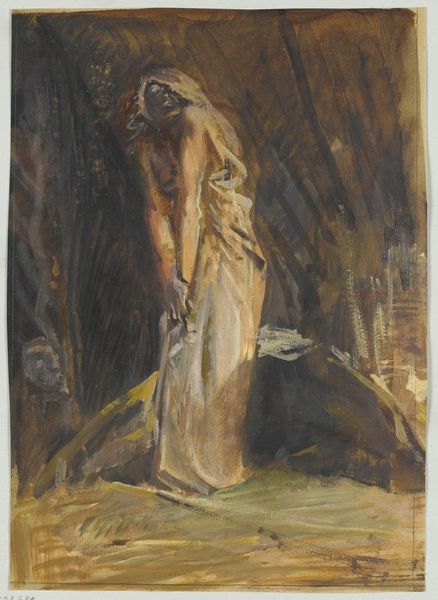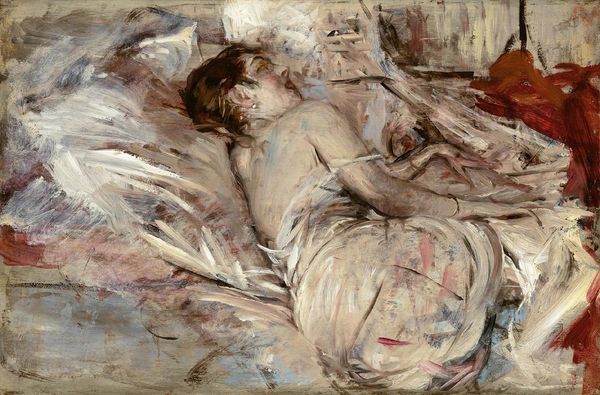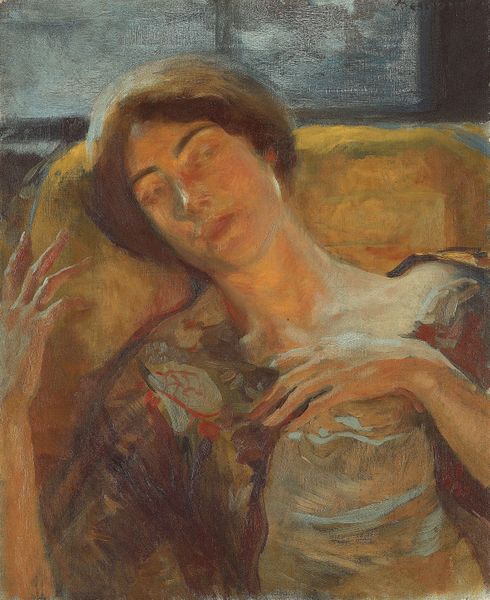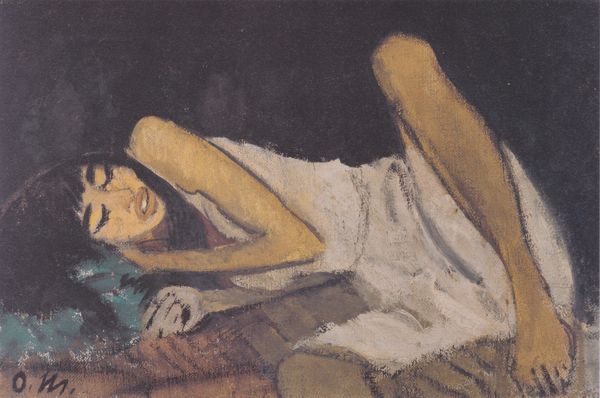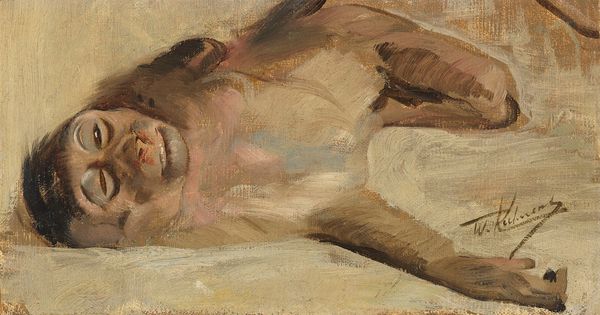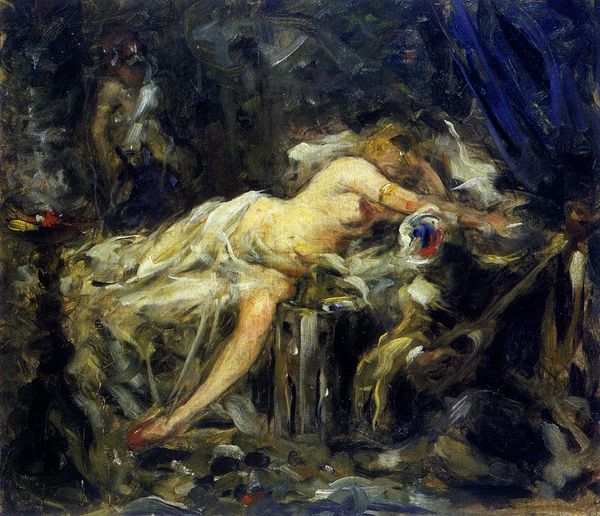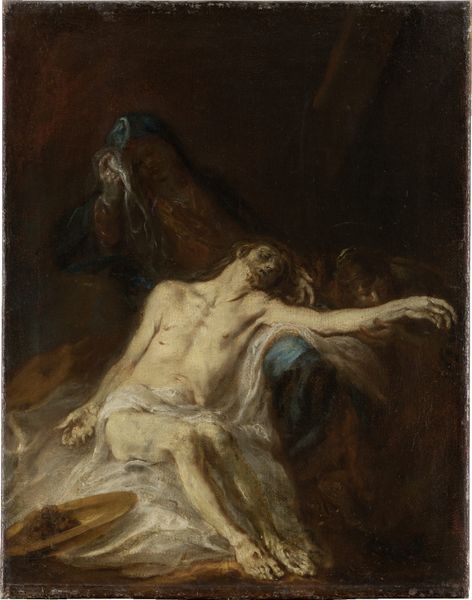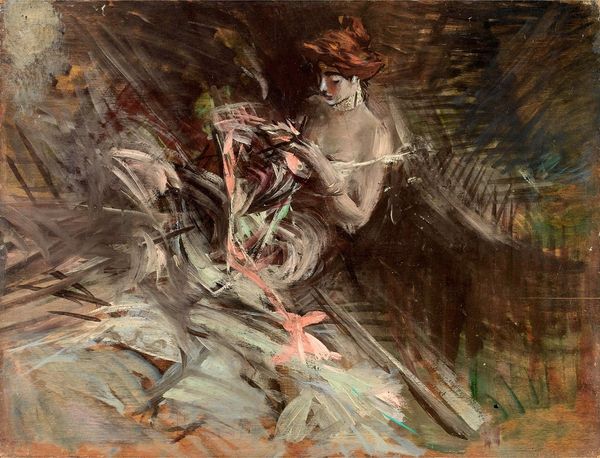
painting, oil-paint
#
portrait
#
dutch-golden-age
#
painting
#
oil-paint
#
oil painting
#
nude
#
realism
Copyright: Public Domain: Artvee
Curator: Looking at Jozef Israëls' 1899 oil painting, Saul, I’m immediately struck by the weight of melancholy it conveys. There’s an almost oppressive heaviness in the figure’s posture. Editor: Oppressive is right. Look at the rawness of the brushstrokes; they amplify the anguish etched into Saul's figure. It is fascinating to see him depicted with vulnerability, a divergence from more conventional heroic representations. This painting disrupts traditional narratives, showing power as burdened by psychological complexity. Curator: I agree. Consider also the symbolic significance of representing Saul, a King, in such evident distress. Kingship, divinity, strength - we expect those visual languages. To see Saul unclothed, exposed, perhaps signals a moment of significant symbolic rupture or a loss of divine favor and agency. It's potent iconography, destabilizing conventional portrayals. Editor: It makes you question who decides and controls those visual languages you mention, and how these definitions inevitably exclude many identities and lived experiences. The nude body becomes a site where these battles are waged, where we grapple with not only mortality, but the imposed values and burdens placed on our bodies through religion and the gaze of others. Curator: Absolutely. The artistic tradition in depicting Biblical narratives serves to illustrate lessons. Israëls' work adds layers of internal torment and humanity, complicating its traditional message, perhaps echoing a personal struggle. We’re privy to this internal world, marked by visible, physical, agony. The raw emotional honesty on display offers us a kind of mirror. Editor: Ultimately, this is not simply an image of an Old Testament king. This feels deeply rooted in empathy, raising powerful questions about the cost of leadership and the weight of choices on an individual, rendered palpable in the medium of paint. It seems almost radical, to me, for its time. Curator: Indeed, and I feel like I better understand the universal human condition, the capacity for pain, and how history continuously rewrites the symbols we create, sometimes intentionally. Editor: For me, viewing “Saul” reinforces the necessity of seeing canonical stories with a critical, questioning lens and embracing narratives that push boundaries to include all bodies.
Comments
No comments
Be the first to comment and join the conversation on the ultimate creative platform.
